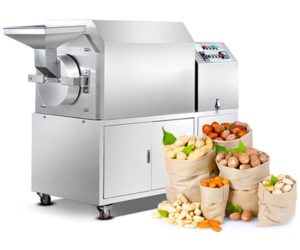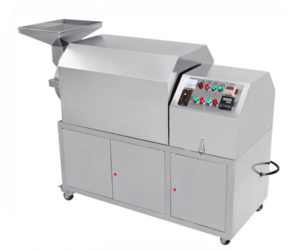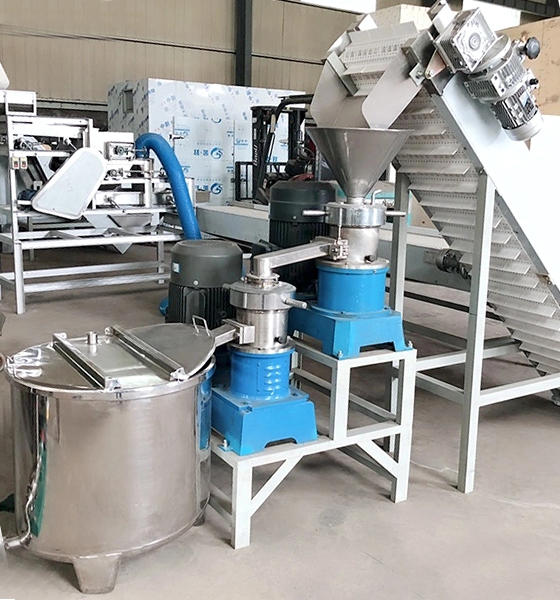How to Make Sesame Paste with Nut Butter Machine
As we all know, sesame is an oil crop with a very high fat content, which can reach 58.9%, of which 42.4% is oleic acid, 39.7% is linoleic acid, 9.8% is palmitic acid, and 6.4% is stearic acid. Both oleic acid and linoleic acid are unsaturated fatty acids, which have the effects of regulating cholesterol, reducing thrombosis and platelet coagulation, preventing arteriosclerosis, anti-aging, preventing disease and cancer.

Sesame Butter Benefits
1. Sesame paste is rich in protein, fat and various vitamins and minerals, and has high nutritional value;
2. The sesame paste contains more calcium, and regular consumption in moderate amounts is beneficial to the development of bones and teeth;
3. The iron content of sesame paste is several times higher than that of pig liver and egg yolk. It has a positive effect and can correct and prevent iron deficiency anemia;、
4. Sesame paste is rich in lecithin, which can prevent hair from turning white or falling off prematurely.
Sesame Butter Making Process
Raw sesame screening → rinsing → roasting → raising smoke and dust → grinding sauce → sterilization → packaging → finished product


- Screening: remove impurities in sesame, such as soil, sand, iron filings, weed seeds and immature sesame seeds.
- Rinse: Use water to remove sesame-like mud, tiny impurities and dust. Rinse and soak the sesame seeds for 1-2 hours to allow the sesame seeds to evenly absorb water. The water content of soaked or sesame seeds is 25%-30%. Drain the sesame seeds and fry the seeds. If the sesame seeds are still wet, fry the seeds in the pan, which will easily peel off. Soaking is good for cell rupture. After the sesame seeds are rinsed and soaked, the water penetrates into the inside of the intact cells, causing the gel body to swell, and then the seeds are heated and fried to break the cells.
- Roasting: Use a nut roasting machine to make the sesame seeds evenly fried. After frying, pour cold water of about 3% of the sesame and fry for another minute. After the sesame smokes, it will come out of the pan. The function of splashing water is to make the temperature drop suddenly, let the sesame tissue crisp, help to grind the sauce, and also make the nest smoke rise with the water vapor. The role of fried seeds is to denature the protein and facilitate the removal of oil. When the sesame is fried to near 200 degrees Celsius, the protein is basically completely denatured, and the content of neutral oil and fat is the highest. After burning above 200 degrees Celsius, part of the neutral oil and fat overflows and the oil and fat content decreases. In addition, when stirring the oil in the pulp, the coke skin may absorb part of the neutral oil, so if the sesame is fried too old, the oil yield will decrease. Stir-fried seeds produce aroma substances, and only high-temperature fried sesame seeds have aroma. If the oil produced after high-temperature frying is no longer heated, the rich flavor can be retained.


- Cleaning: Clean the sesame seeds out of the pot immediately, reduce the temperature, and remove the smoke, coke and broken skin. Coke dust and broken skin will affect the separation of oil and residue in the subsequent process, reducing the oil yield. If the sesame in the pan is not raised in time to cool down the smoke, it may produce a burnt smell, which may affect the smell and color of the sesame oil.
- Grinding: Grind the fried sesame seeds into sesame paste with a sesame butter grinder. Grind the sesame paste as fine as possible. The ingredients should be even when grinding the sauce. Air milling is strictly prohibited. With frying and grinding, the temperature of the cooked sesame should be maintained at 65-75 degrees Celsius. If the temperature is too low, it will easily regain moisture and the grinding will not be fine. After the seeds are fried, the internal oil accumulates and is in a state of easy extraction (the viscosity of the oil is also reduced), which forms a slurry after grinding. Due to the higher oil content of sesame and more oil, this slurry is a suspension of solid particles and oil. Relatively stable, solid matter and oil are difficult to separate by standing. Therefore, it is necessary to use water to make the solid particles absorb moisture, increase the density and separate themselves. The requirements of grinding sauce are as fine as possible, which has two purposes: one is to fully rupture the oil cells so as to take out the fat as much as possible; the second is to make the water evenly penetrate into the sesame paste when the oil is stirred, and the grease is completely replaced.
- Sterilization: Heat the sauce to 95°C for 50 seconds for sterilization, and enter the canning process immediately after completion.
- Packing: Sterilize the four-spin glass bottles and caps with steam or boiling water in advance, keep the sauce body temperature above 85 ℃, and leave a gap, and seal with a vacuum sealing machine. After sealing the tank, put it in boiling water at normal pressure for 10 minutes for sterilization. After completion, cool the water step by step to about 37℃.